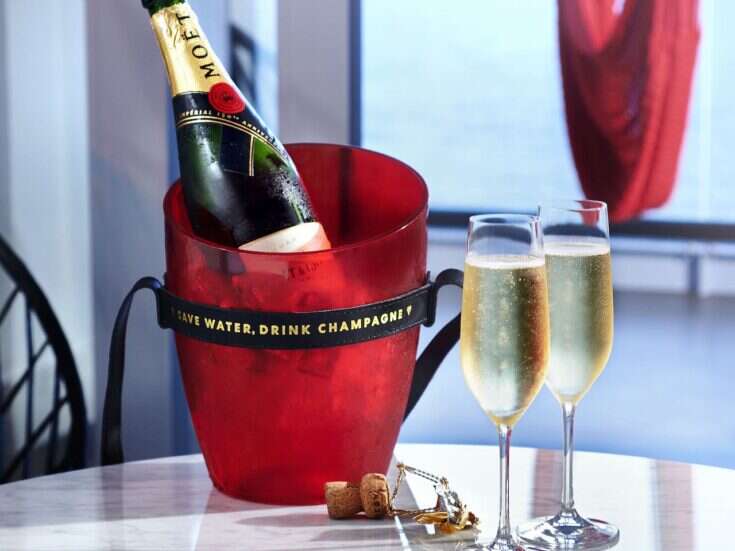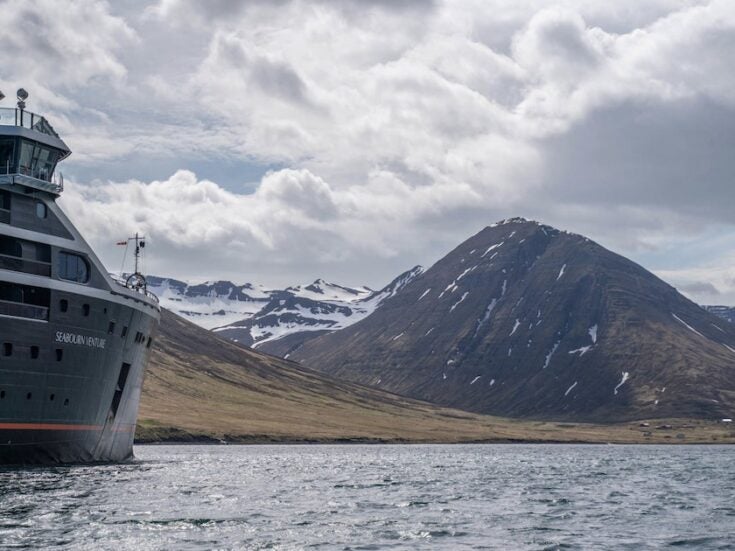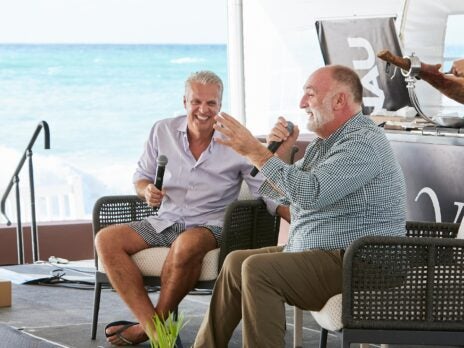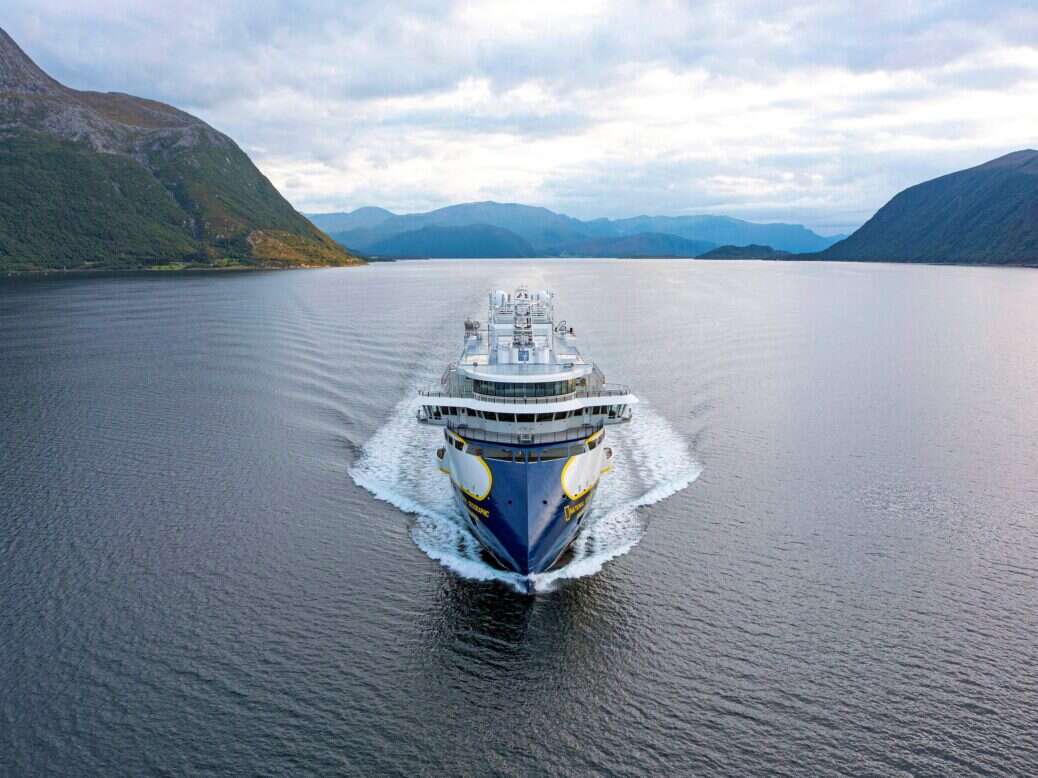
A three-course lunch was being served aboard Lindblad’s National Geographic Endurance. We had been crossing the Denmark Strait for two days; since leaving Greenland the weather had deteriorated somewhat. A bad system had surged north, the captain made the call to leave Greenland several days early and “head for Iceland to avoid the worst of it.”
Waiting staff danced around the dining room like an expertly choreographed ballet, narrowly avoiding one another as they carried trays on their shoulders, stacked high with plates and glasses. They barely noticed as the ship pushed onwards, pitching and rolling over swells that could reach upwards of 35 feet. Diners occasionally grabbed sliding wine glasses, while the bigger waves lapped up at the large windows that encased the dining room. It’s likely as close to a real adventure as you can get while still being afforded the luxury of a post-lunch affogato. And anyway, a little bit of chop just adds to the atmosphere.
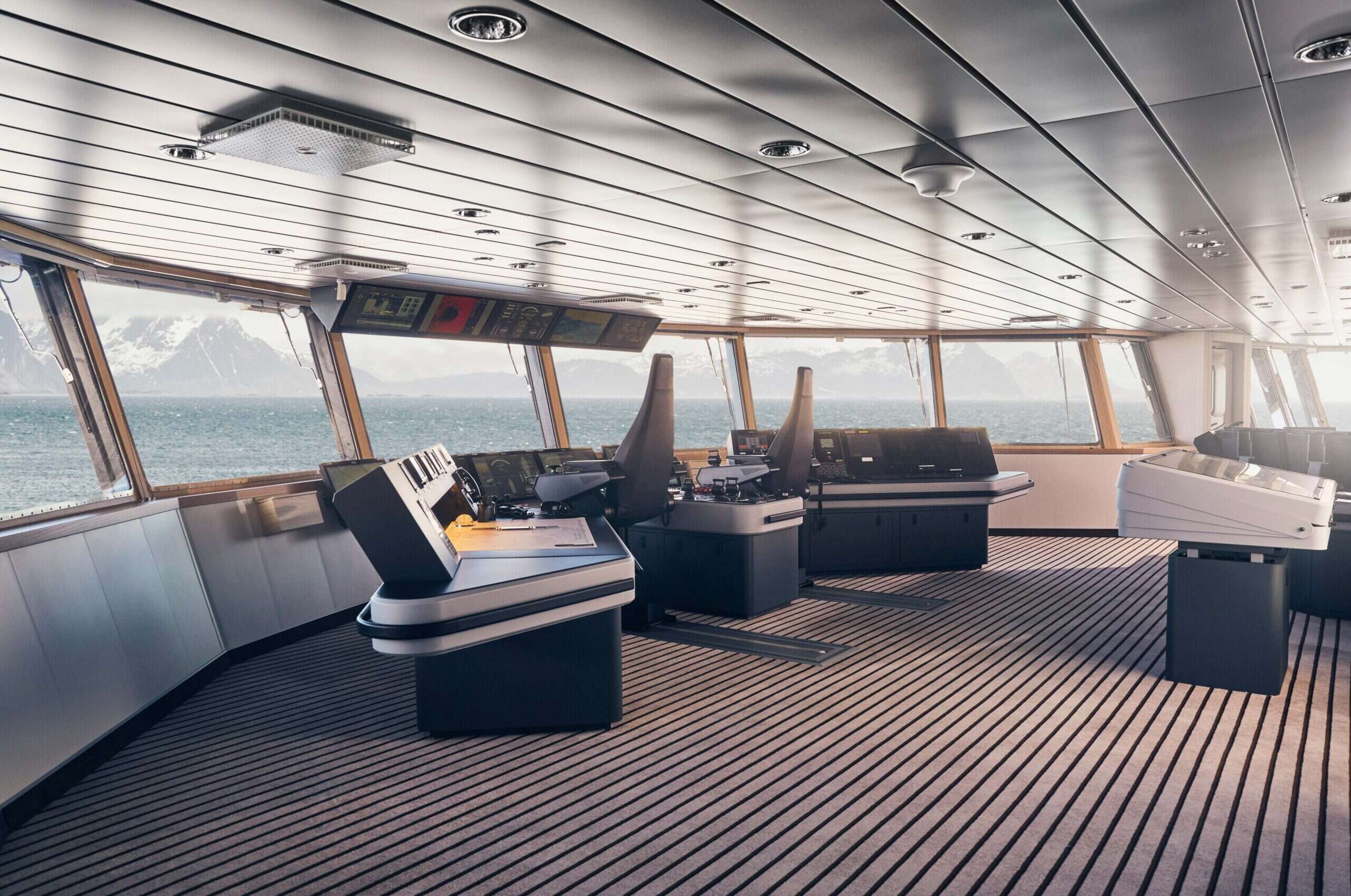
Throughout the 20th century, heroic feats of exploration captured headlines across the globe. From the first flight across the Atlantic, the crossing of the Rub’ al-Khali, summiting Everest, the race to both poles and of course the moon landings, explorers became household names. Today, once previously thought “unconquerable” feats have now in fact been conquered. But in the gulf left behind by this wake of exploration, a new market has opened. Now a select group of companies offer travelers the opportunity to take the path least trodden, to inhabit this realm, walk in the footsteps of these explorers, and witness the vast expanse of earth at its extremities.
One such company that practically invented this style of travel is Lindblad Expeditions, seasoned veterans in the art of polar exploration. Founded in 1958 under the name Lindblad Travel, Lars-Eric Lindblad would go on to lead the first tourist expedition to Antarctica in 1966.
Continuing the legacy of Lars-Eric Lindblad, Lindblad Expeditions has been in partnership with National Geographic since 2004 and offers expeditions to some of the most remote places on Earth aboard its 17 ships.
The latest additions to this impressive fleet are sisterships National Geographic Endurance and Resolution. As two of the most advanced ships in the sector, these vessels have been specifically designed to transport travelers into the polar regions. Saunas and wellness facilities, briefing and lecture rooms, and dedicated research labs occupy the decks, as well as all the amenities you would expect from a luxury expedition vessel.
I recently stepped aboard the National Geographic Endurance as it sailed from Kangerlussuaq, a fjord in northwest Greenland, heading south around Greenland’s southern tip and then across the Denmark Strait to dock in Reykjavik, Iceland.
[See also: Champagne Cruising: How Liners Are Adding Extra Sparkle]
The Ship
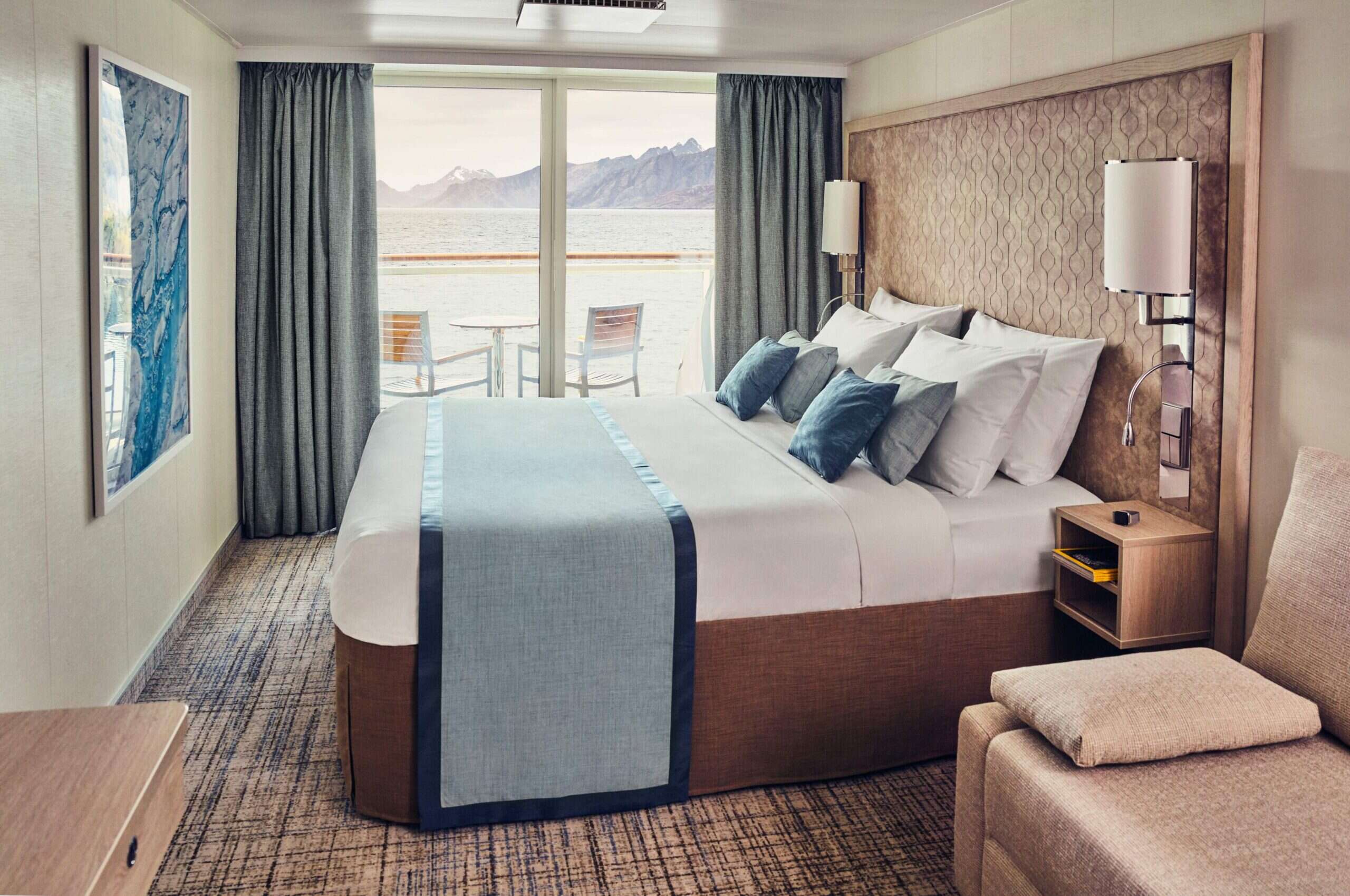
The National Geographic Endurance is a true feat of engineering, a vision of blue, yellow and white — company colors — it would sit proudly in any port, however, it’s against a backdrop of icebergs, glaciers and deep blue arctic water that she’s truly at home.
Positioned as “the most advanced ice-class expedition ship afloat,” and named after Ernest Shackleton’s famous vessel that lasted 10 months stuck in ice around Antarctica before the sailor’s daring escape, the National Geographic Endurance has some major boots to fill.
While by all metrics a sizable vessel, Endurance carries only 138 guests across 71 spacious cabins, a testament to Lindblad’s commitment to luxury. Featuring two restaurants, a yoga studio, sauna, several bars and a library, while you’re not out exploring there’s certainly enough to keep you occupied.
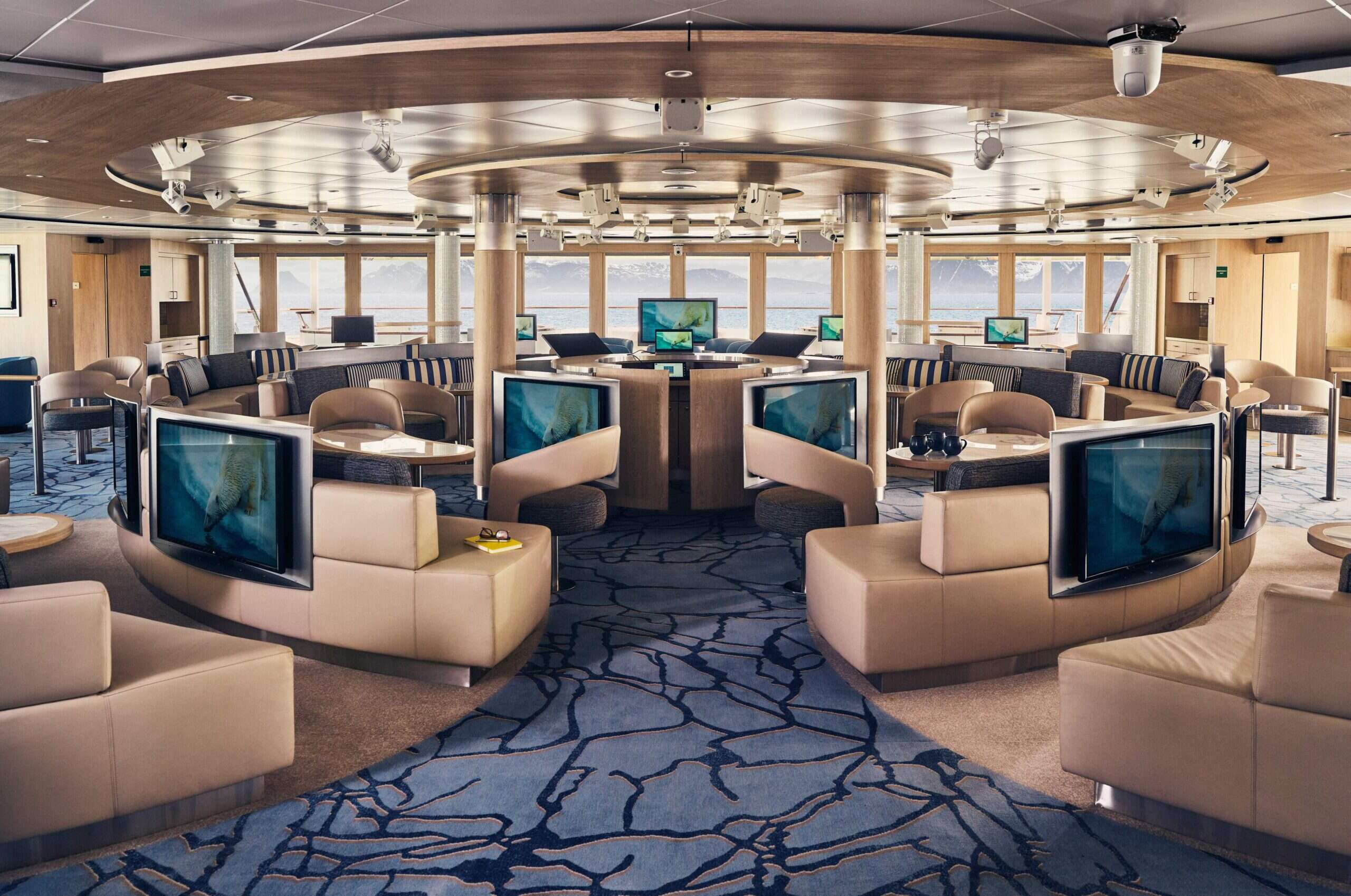
Breakfast, lunch and dinner are served aboard each day. It’s a true marvel that a ship traversing some of the most remote stretches of water on the planet can produce such a varied menu. Fresh ingredients form dishes that dart across the culinary spectrum, from classic French to Southeast Asian. On the upper deck, there is even a multiple-course tasting menu, inspired by Lindblad Expeditions’ commitment to sustainable travel. Beautiful dishes that focus on zero waste arrive on plates made of ice in this nod to climate change.
Even Endurance‘s hull pushes the limits of innovation. Without getting too techy, Endurance and her sister ship Resolution feature an X-bow. Essentially, instead of being pointy and arrow-shaped, as you would expect from the front of a ship, these ships’ bows are inverted, curving backward toward the bridge. It’s striking to look at, while greatly improving fuel efficiency and stability in rough seas, something I was extremely grateful for as we crossed the Denmark Strait. The X-bow has the added benefit of reducing noise and in turn, improving the chances of spotting wildlife. For a vessel designed for expeditions in some of the roughest, wildlife-rich environments in the world, it’s a no-brainer.
[See also: Ponant Reveals Winter Journeys Through St Lawrence River]
The Journey
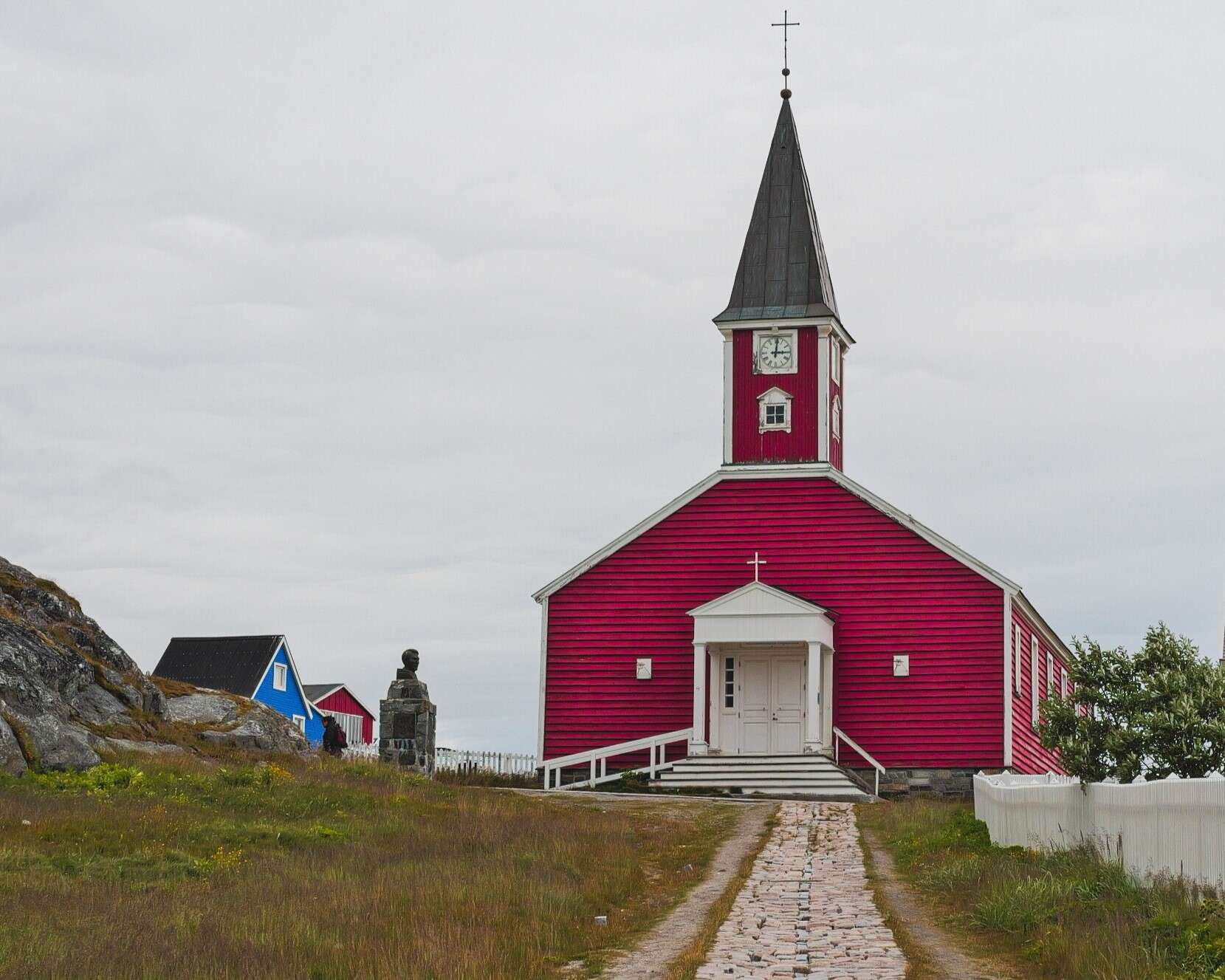
The National Geographic Endurance was built to traverse polar regions, and so spends most of her time at the top or bottom of the world, transporting travelers to the Arctic, Antarctica, Falklands, Patagonia, and Iceland to name a few.
The voyage I embarked on was entitled South Greenland Exploration: Fjords, Waterfalls and Fishing Villages. Greenland is a fascinating country. One of the least visited destinations in the world — seeing only 100,000 tourists annually — around 80% of its land is occupied by a colossal polar ice sheet.
Beginning in Kangerlussuaq — once a US military base constructed during the Second World War, today it remains Greenland’s largest airport — the ship headed south for Greenland’s capital, Nuuk. With a population of 20,000, a third of Greenlanders live in Nuuk. It’s a city on the verge of change, its landscape dotted by a mixture of high-rise apartments and traditional colorful dwellings.
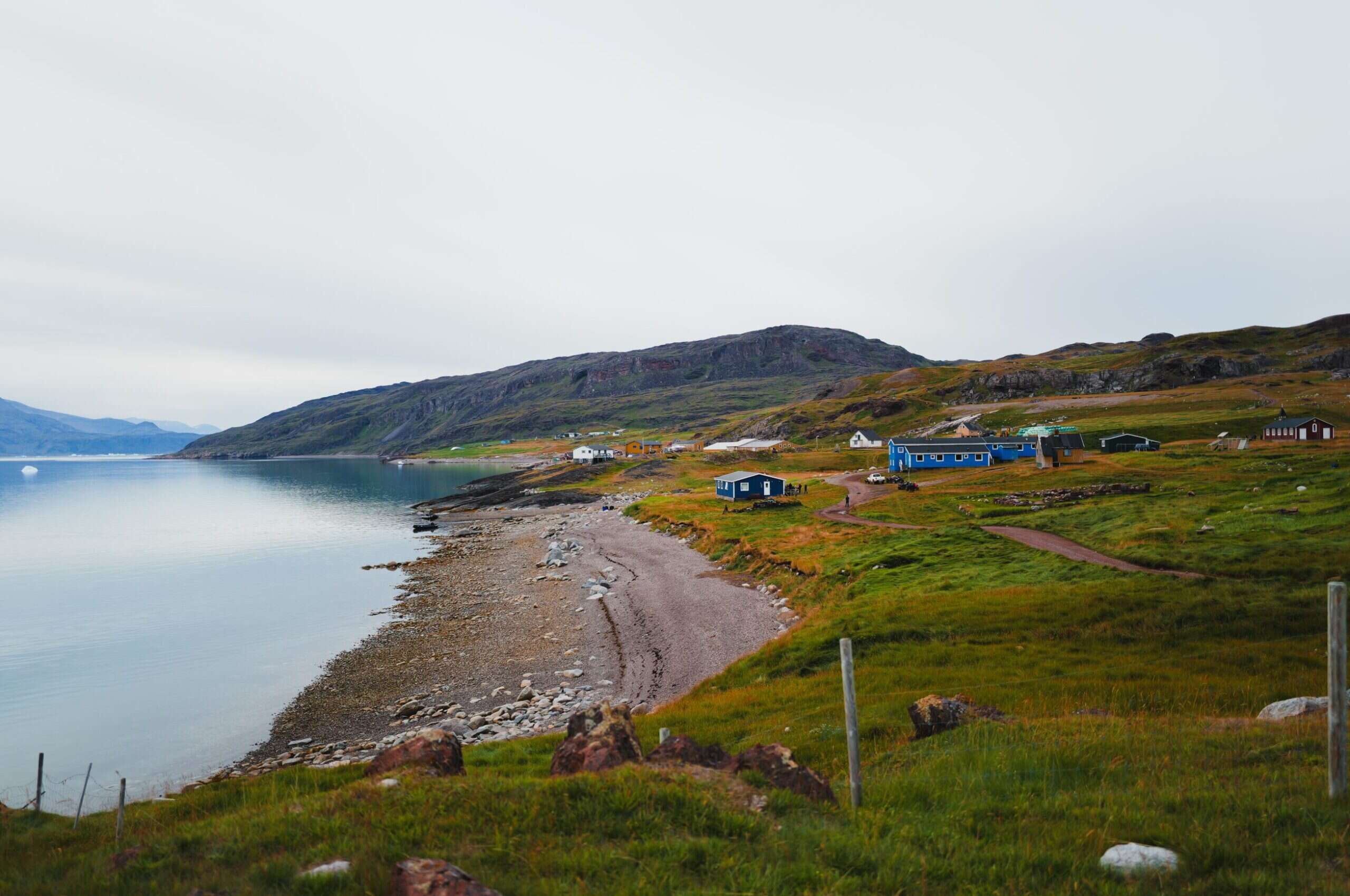
Nuuk is an outlier in Greenland: Three times the size of its next biggest rival, it’s also the only spot on the voyage that Endurance is able to dock at a port. At all other destinations, travelers reach the shore on zodiacs. These are small rigid inflatable boats (RIBs) that transport visitors from the ship to Greenland’s rocky shores; arriving in this manner really brings the concept of an expedition cruise into perspective. These fjords are both complex to navigate and disembark.
Once ashore, the landscape had an almost mystical quality, seemingly untouched, populated only by whales, harp seals and other arctic wildlife. At the end of fjords the occasional village springs up, a subtle reminder that people do live amongst this wilderness. Settlements sustained entirely by sheep farming lie in the very spot the Viking Erik the Red settled around the year 985.
[See also: First Look Inside the Owner’s Residence Onboard Explora 1]
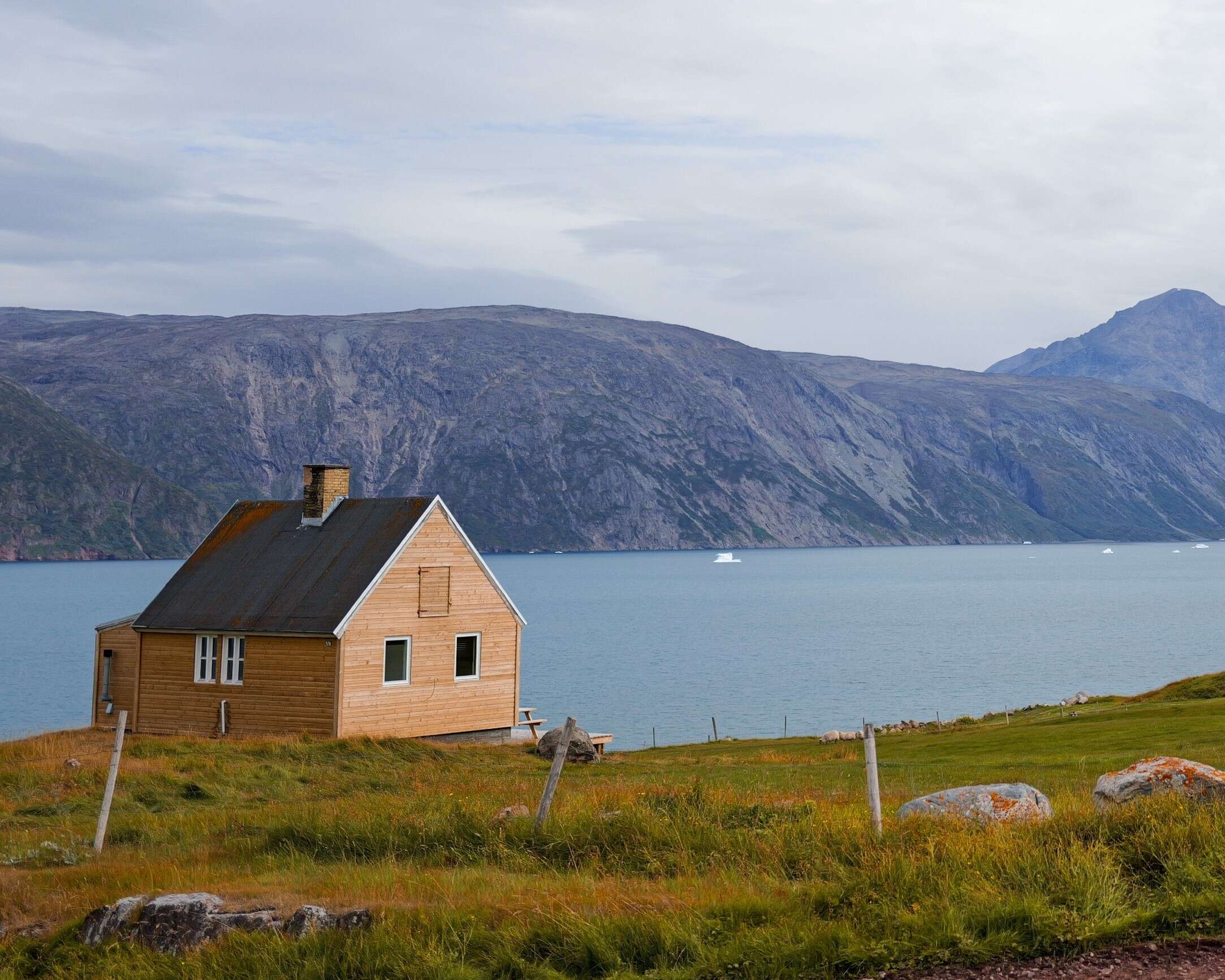
The National Geographic Endurance continued south, rounding Greenland’s southern tip and heading through Prince Christian Sound. Here steep mountains, some over 5,000 ft, descend quickly to the water, delivering the most dramatic vistas of the journey. The night before we had heard the news of the incoming storm and were making our way hastily to Iceland.
In expedition cruising plans change. The experienced expedition team on board reworks the itinerary based on what’s happening —it’s part of the experience.
I woke early one morning to an announcement from the captain that around 40 humpback whales had been spotted. Stepping out onto the balcony, several separate pods of whales had surrounded the ship, occasionally rising up and breaching the water.
[See also: The Most Relaxing Luxury Cruises of 2023]
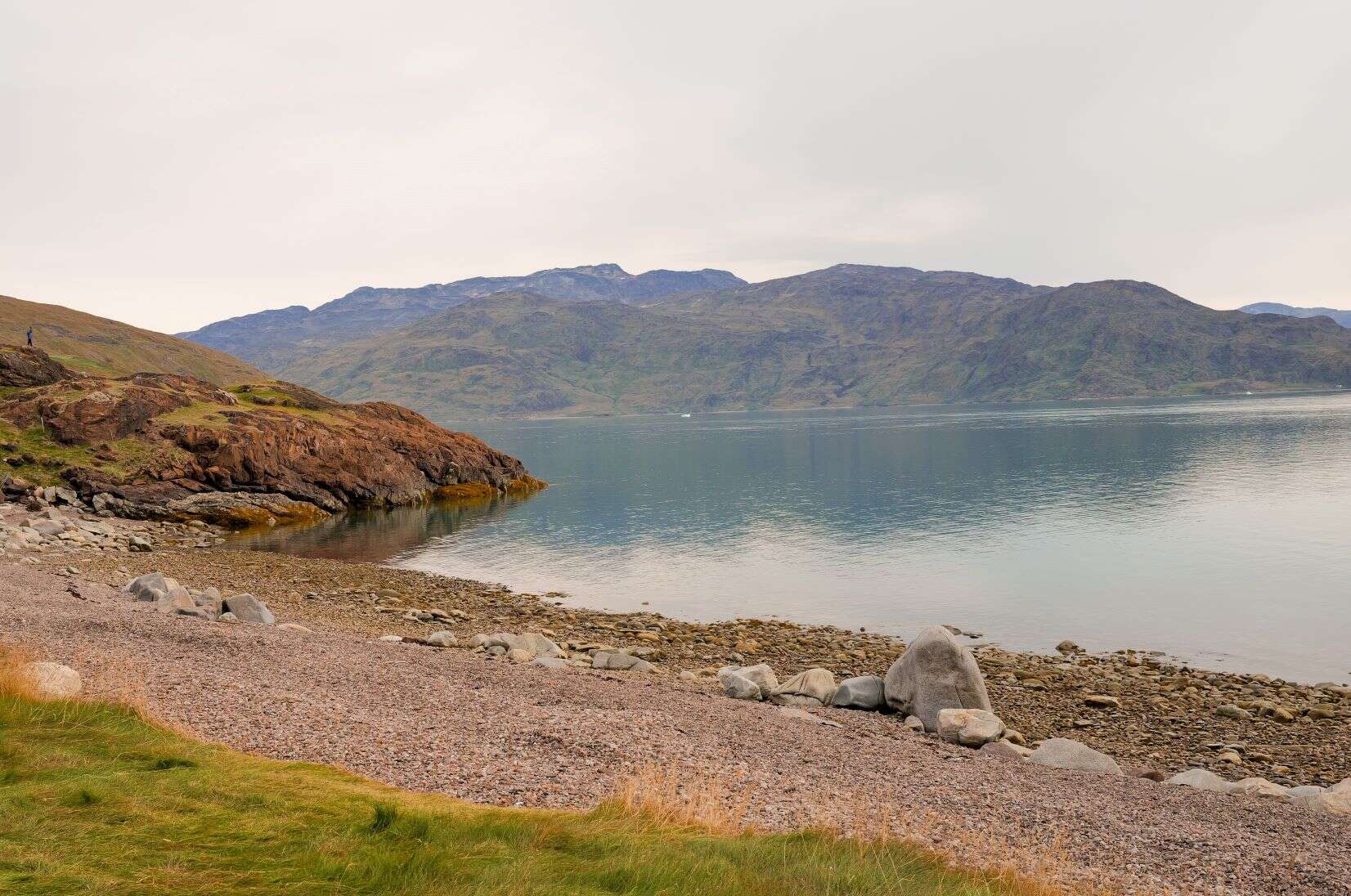
At night, with a bit of luck, northern lights dazzle the night sky. During a particularly good display at around one in the morning, the captain once again sent a gentle message over the ship’s intercom. Some sights are just too good to miss.
This is the beauty of this style of travel. Superb itineraries are rigorously set and planned by some of the best in the business, but these experts are then able to go off-piste and change things on the fly. It’s in these opportune moments, that the heart of an expedition cruise reveals itself.
Lindblad Expeditions: South Greenland Exploration: Fjords, Waterfalls, and Fishing Villages trip begin at $13,800 per person. Lindblad holds expedition cruises in destinations all around the world, which can be booked via their website.
